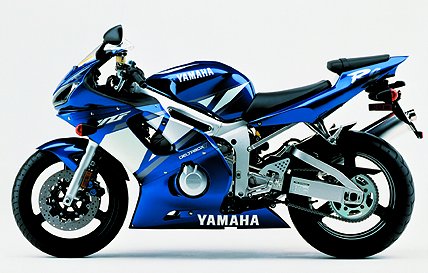
In the never-ending game of leap frog in the 600 class, Suzuki and Honda have made the latest moves. Suzuki with its totally new 2001 GSX-R600 and Honda with its substantially revised and fuel injected 2001 CBR600F4i. Yamaha, which found itself at the top of this class following the introduction of its stunning R6 just two years ago, is not ready to introduce an all new model. Nevertheless, in an effort to stay ahead, Yamaha has made significant changes to the R6 for 2001.
The new R6 has lost five pounds from an already featherweight chassis. A lighter battery, a new, aluminum steering stem and nut (last year’s were steel) and a shrunk ignition get the credit.

Yamaha wanted improved power and power delivery as well. In this area, Yamaha came up with new, lighter and stronger forged pistons and carburized connecting rods. Also, new carburetor and ignition settings compliment the internal engine changes. Yamaha claims the new R6 has more power throughout the rpm range. An interesting detail in the engine changes include a taller piston and shorter rod, which maintain the same compression ratio as last year’s bike. This had something to do with the “ideal” rod length ratio. Also, the piston surface has been treated with alumite for greater heat dissipation and reduced friction.
Refinements to the transmission were aimed at improving shifting. A new, tapered shift shaft offers more feel and the addition of a steel bushing in the cases offers smoother shifts.
Several areas were addressed in the appearance of the new bike as well. Most notable are the LED taillights and painted under-fender. No need to hack off that long license plate bracket either. It is easily removed, with just three bolts securing it to the under-fender. Yamaha also added a longer swingarm-mounted inner fender aimed at keeping debris from marring the finish on the under-fender and getting to the shock. The mirrors on the R6 have been replaced as well — they are the same as those used on the R1. Set out wider, they offer better rearward visibility.
With the chassis otherwise unchanged, the R6 predictably handled very much like last year’s bike. That is a compliment, however, as last year’s bike set the standard for racetrack handling in the class.

We had the chance to ride the new R6 at Willow Springs Raceway. Actually, we had the chance to ride the machine virtually all day, until test rider Jeff Whitmer got tired of wringing its neck and went home. Jeff, who is quite familiar with last year’s R6, felt the new machine had slightly more power that came on a little bit lower in the rpm range than last year’s bike. Not a huge difference, but notable, and a difference that improves corner exits on the racetrack.
The outstanding brakes and chassis balance are still there, along with the incredible flickability that has reminded many R6 riders of a 250 GP bike.
How does the new R6 stack up to the competition? We can’t answer that question without back-to-back comparisons, but Suzuki and Honda have definitely made the class more competitive this year. We recently attended Honda’s press intro, and we will have an article on that subject shortly, along with a street riding impression of the fuel injected F4. Stayed tuned.





